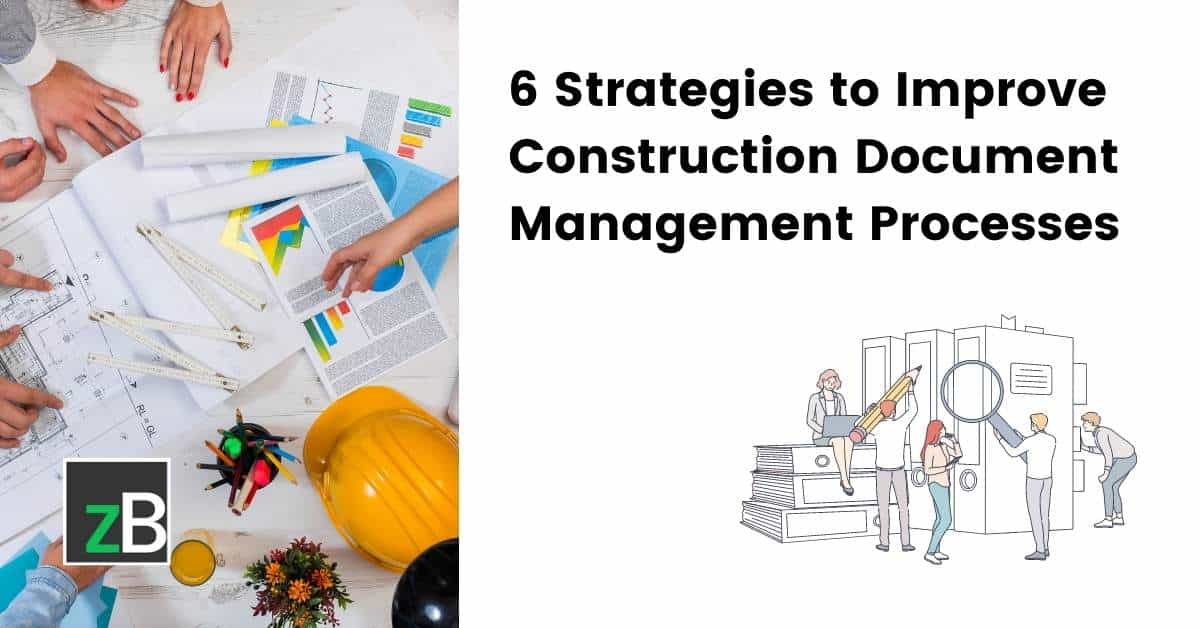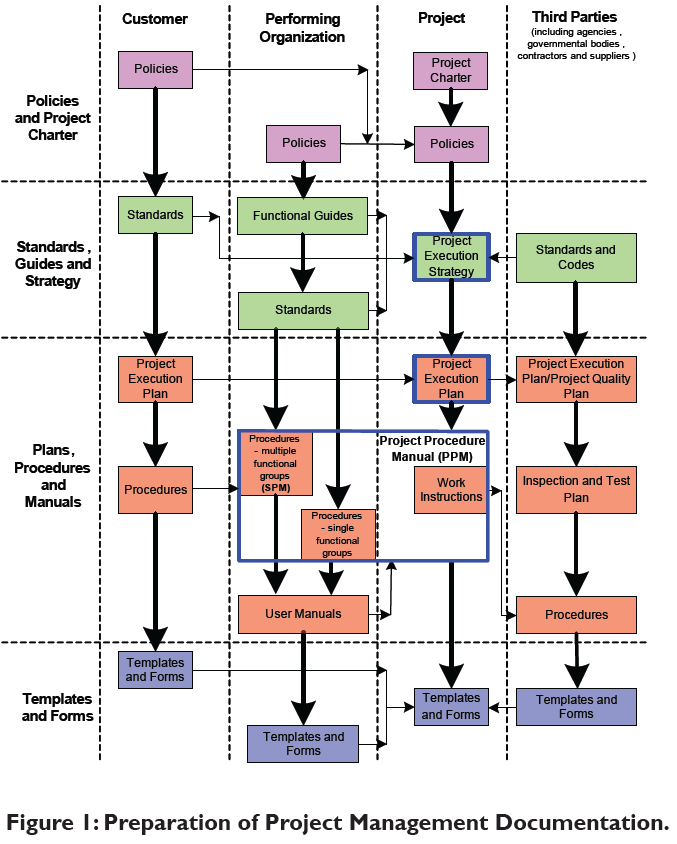Streamline Cooperation: The Power of Construction Document Management Equipment
Streamline Cooperation: The Power of Construction Document Management Equipment
Blog Article
Architect's Overview to Streamlining Construction Record Management for Effective Task Implementation
In the intricate globe of style and construction, the effective administration of job documentation stands as a keystone for success. Architects are tasked with managing a myriad of illustrations, reports, contracts, and specifications, all important parts for bringing a task to fruition. The procedure of organizing, sharing, and keeping these records can commonly become a maze of ineffectiveness and problems if not managed meticulously. By exploring systematic approaches, ingenious devices, and industry best techniques, architects can not only simplify their paper management processes however also pave the means for more effective task execution. Let's browse via the vital methods and solutions that can revolutionize how architects take care of building documentation, making certain jobs are delivered with precision and timeliness.
Importance of Efficient Paper Management
Efficient document monitoring is crucial for engineers in the building and construction market as it plays a critical duty in making sure the effective execution of jobs. Proper company and administration of these documents are imperative to keep project timelines, make certain compliance with regulations, and assist in effective interaction among project stakeholders.

Effective document management enables architects to access crucial info immediately, track job progression properly, and minimize threats linked with mistakes or noninclusions. By implementing streamlined record administration procedures, designers can improve partnership with clients, professionals, and other group members, bring about boosted task results and customer satisfaction.
Furthermore, efficient file management helps engineers keep a thorough task background, enabling them to leverage past experiences and lessons discovered for future jobs. In today's fast-paced construction sector, where prompt decision-making and info sharing are paramount, effective file monitoring is a cornerstone for success.
Techniques for Streamlining Document Company
Efficient file monitoring practices not just make sure project success for engineers in the building sector however likewise lay the foundation for executing techniques for enhancing document organization. To improve paper company efficiently, designers need to first establish a clear naming convention for files and folders. Consistency in naming documents based upon task phases, document types, and appropriate info will certainly facilitate easy access and minimize complication.
Making use of cloud-based storage services can also enhance file organization by supplying a centralized place for all project-related data - construction document management. This allows staff member to access the most up-to-date files from anywhere, advertising partnership and effectiveness. Applying variation control systems even more fine-tunes paper organization by tracking changes, preventing clashing edits, and guaranteeing that the most up to date versions are always offered
Furthermore, creating a sensible folder framework with marked subfolders for different paper groups, such as agreements, illustrations, and specifications, can streamline record administration processes. Frequently reviewing and removing repetitive or outdated documents will certainly help keep a lean and orderly record repository, eventually boosting performance and job outcomes.
Leveraging Modern Technology Devices for Partnership
In the realm of modern architecture, architects are increasingly relying on sophisticated modern technology tools to promote seamless cooperation among job stakeholders. Leveraging modern technology for cooperation improves interaction, boosts efficiency, and improves total task end results. Cloud-based systems such as BIM 360 and Procore allow real-time accessibility to job documents, allowing specialists, clients, and engineers to team up successfully despite their physical location. These devices facilitate concurrent editing, version control, and instant updates, minimizing hold-ups and errors brought on by miscommunications.
Online style and construction (VDC) software like Revit and AutoCAD Style make it possible for architects to produce thorough 3D versions that can be shared and modified collaboratively. This real-time partnership enhances style visualization, precision, and control, leading to far better decision-making throughout the job lifecycle. In addition, interaction devices like Slack and Microsoft check Teams give instant messaging, file sharing, and video clip conferencing capacities, fostering seamless communication among employee and stakeholders.
Making Sure Accuracy and Variation Control

Effective variation control additionally assists in handling file authorizations and making sure that just accredited personnel make modifications. Engineers should establish clear methods for documenting changes, consisting of timestamps and user recognition, to create an audit route for accountability. Frequently connecting with the project team concerning version updates and modifications is vital to avoid confusion and preserve alignment throughout the building process.
Finest Practices for Record Sharing and Accessibility
Having actually established a durable system for version control in building document management, designers can now focus on maximizing record sharing and access methods to enhance cooperation and efficiency among task stakeholders. Among the most effective techniques for effective paper sharing is to utilize cloud-based platforms. These systems use real-time accessibility to project documents, making it possible for staff member to view, edit, and discuss documents at the same time. By streamlining files in a cloud setting, engineers can ensure that all stakeholders are collaborating with the most updated details.
Additionally, carrying out role-based gain access to control is necessary for preserving data safety and security while helping with collaboration. Appointing various consent levels to staff member ensures that delicate info is only obtainable to licensed personnel. Routinely upgrading gain access to consents based on task demands and group changes is crucial for preserving data honesty.
Integrating task administration software with paper sharing platforms can additionally enhance workflows. This assimilation permits seamless communication, job tracking, and paper administration within a single user interface, lowering view it now the demand to change in between numerous tools. By adhering to these finest methods, designers can develop a much more effective and collaborative document sharing setting, eventually causing effective task implementation.

Verdict
To conclude, effective building record management is important for successful job execution. By implementing approaches for company, leveraging innovation tools for collaboration, making certain accuracy and version control, along with complying with ideal methods for file sharing and accessibility, designers can improve their operations and enhance overall task effectiveness. Prioritizing these facets of paper administration will result in smoother project execution and better end results for all stakeholders involved.
Efficient record administration is important for architects in the construction sector as it plays an essential function in ensuring the effective execution of tasks. construction document management. Correct organization and management of these files are imperative to preserve project timelines, guarantee compliance with policies, and facilitate efficient interaction amongst task stakeholders
Effective record management methods not just make certain project success for designers in the building and construction market however additionally lay the foundation for applying techniques for streamlining record organization. One key method is establishing a centralized paper repository where all group members can access the most recent versions of drawings, specs, and other task papers.Having developed a robust system for variation control in building record monitoring, architects can now concentrate on enhancing paper sharing and access approaches to improve collaboration and performance among task stakeholders.
Report this page